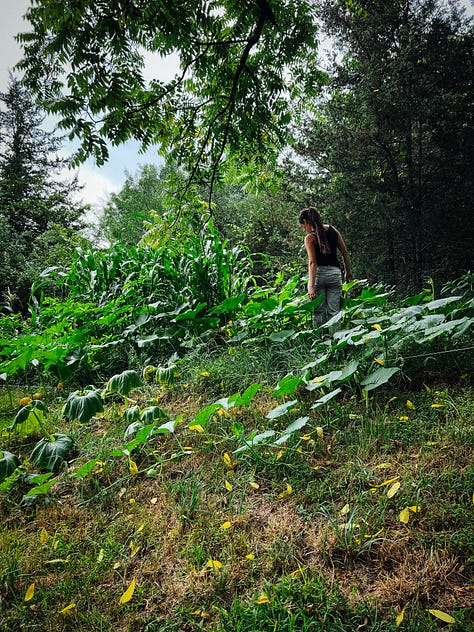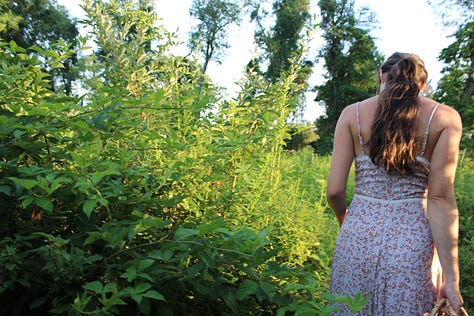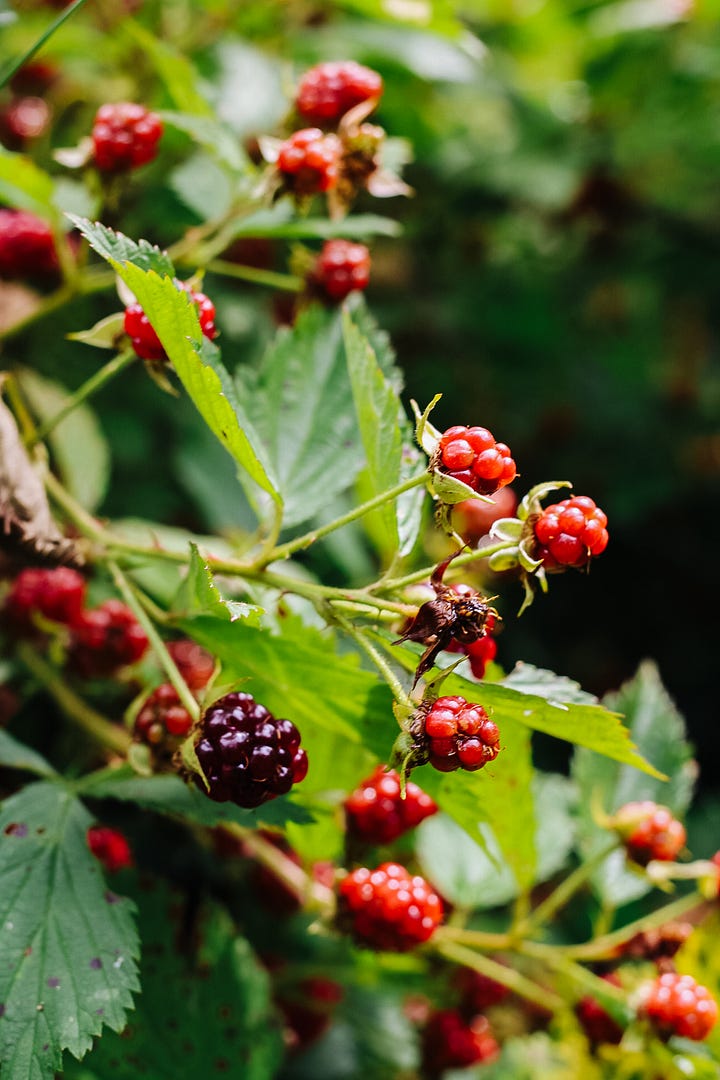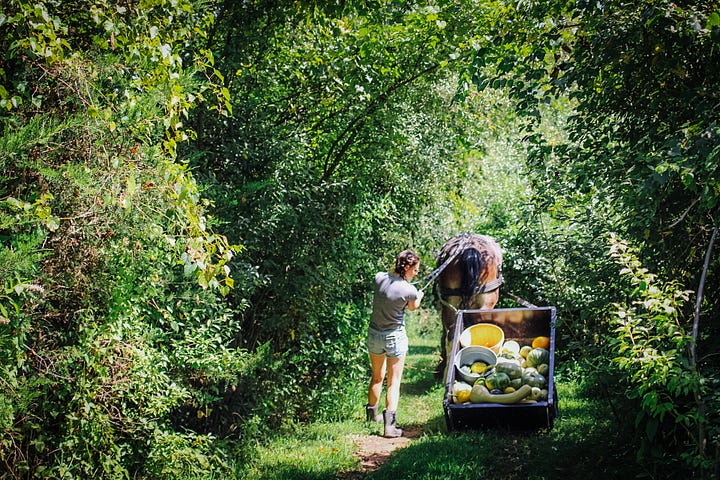
Many of us are familiar with woodland landscapes and the dense brush and vegetation that grows in a small space. Upon looking closely, you will find there are multiple layers in which these plants thrive; the over-story, mid-story, and under-story. There are vines, shrubs, ground covers, mulches, and often mushrooms. This abundance is nature’s design for maximizing space, introducing a myriad of root depths and deposits into the soil, and absorbing more carbon dioxide from the atmosphere. We can mimic this growth pattern in our own gardens to increase our yields, improve crop health, and sequester carbon. This form of gardening is called food forest gardening, and has existed in cultures around the world for centuries.
A food forest garden takes time to establish. While some items can be grown as annuals and bear a harvest immediately, other long-term crops like fruiting trees and shrubs may take years to offer a proper yield. This is the main reason why this form of gardening or farming is not as prevalent in modern day agricultural systems; in short, it takes too long. But with that in mind, food forest gardening offers more pros than cons. Once perennials are planted they come back year after year with bigger and more prolific harvests. A network of different plants can assist one another in supplying nutrients, fixing nitrogen, repelling insects and even some forms of disease, and in attracting pollinators. Over time the forest requires less hands-on management and boasts more food.





Build Layers
When designing a food forest, it’s ideal to start by considering over-story plants. Their mature height, canopy width, shade density, and root structure will determine appropriate companion plants. Such members of this family in a permaculture forest garden could include oak, chestnut, maple, or walnut. These trees provide a yield with their edible nuts (acorns from oaks, chestnuts or walnuts) or tap-able sap (from maples). Their canopies provide shade and, if planted near structures, cooling power and shelter for animals from the sun’s rays. They absorb massive amounts of carbon dioxide, provide firewood, lumber, and shelter for wildlife. Legume-family trees such as the Moringa fix nitrogen into the soil, assisting other plants growing nearby. They also offer an abundance of medicinal properties.
The mid-story layer is typically comprised of standard and semi-dwarf-sized fruit and nut trees within a permaculture food forest garden. These trees perform many of the same tasks as listed in the over-story group, but present harvestable fruit or nuts. A well cared for apple tree with no disease or pest pressure, nor external damage, can produce eight to ten bushels of apples per year. Smaller fruit varieties such as semi-dwarf and dwarf can bear up to 1260 apples per season, variety depending. Purchasing the largest tree you can afford to plant is wise as it can take ten years for a tree to produce a full harvest.
The next layer is the under-story. These shrubs and plants grow in and around the main trunks of the fruiting and over-story trees. For sun-loving lower growing shrubs and plants, cane berries such as blueberries and blackberries can be installed on the outer drip line of the mature tree. Partially-shade tolerant plantings such as autumn or Russian olive, kale, currents, gooseberry, and elderberry, for example, can be situated closer to the trunk. Culinary and medicinal herbs, and perennial flowers can be interplanted on the ground level to attract beneficial insects, repel pests and even some forms of disease, pull nutrients upward from deep within the soil layers for other plants to feed from, fix nitrogen, and act as natural chop-and-drop mulching plants. Ground covering plants which fill spaces between taller flora on the food forest floor function as weed suppressors. In locations with adequate moisture, oak logs inoculated with mushroom spawn is also a fruitful option.
Lastly, vining crops such as beans, peas, akebia vine, and hardy kiwi for example, can be planted at the base of the food forest trees, which will act as a natural trellising system. Vining fruit can be harvested as the same time as the orchard tree fruit if varieties are well researched and their timing is compatible.
Should food forest gardening be of interest to you, I would start by researching the microclimate your site resides in, learn companion planting methods, and also discover edible perennial plantings. Mixing perennial and annual crops is a great way to vary harvest times, and slowly introduce new foods into your diet (since modern day produce is heavily sourced around annual crops). From there, learn the growing requirements of your desired over-story and mid-story fruit and nut trees, and source under-story companions such as shrubs, flowers, herbs, vines, ground covers, and natural mulchers that require the same growing conditions.
The most important thing to remember when planning any permaculture growing space is that your microclimate and plant selections will be unique to your homestead, garden, or farm. The polyculture systems that I create between my own personal over-story, mid-story, and under-story plants may not work for your location. A successful food forest garden will be a product of combining plants that are best suited to your own growing zone, amount of sunlight, water availability, soil type, and soil nutrients. But regardless of the members of your forest, carbon absorption, improved soil, and abundance are sure to follow. If you do your research, plan accordingly, and take care of your forest canopies, they’ll be sure to provide for you in return for years to come.
If you would like to learn more, my book The Sustainable Homestead has an entire chapter built on orchard building and food forest anatomy. I also include “recipes” for guilds or supporting companion plants based on your fruit tree type. Thank you for reading!





Thank you for this. We’re working with a heavily wooded area, and are currently clearing with silvopasture in mind. I’d love to work with the natural inclinations of our property and develop some guilds, especially as my husband is starting an orchard.
This is amazing. I love everything about this. Hoping to start building something like this one day!